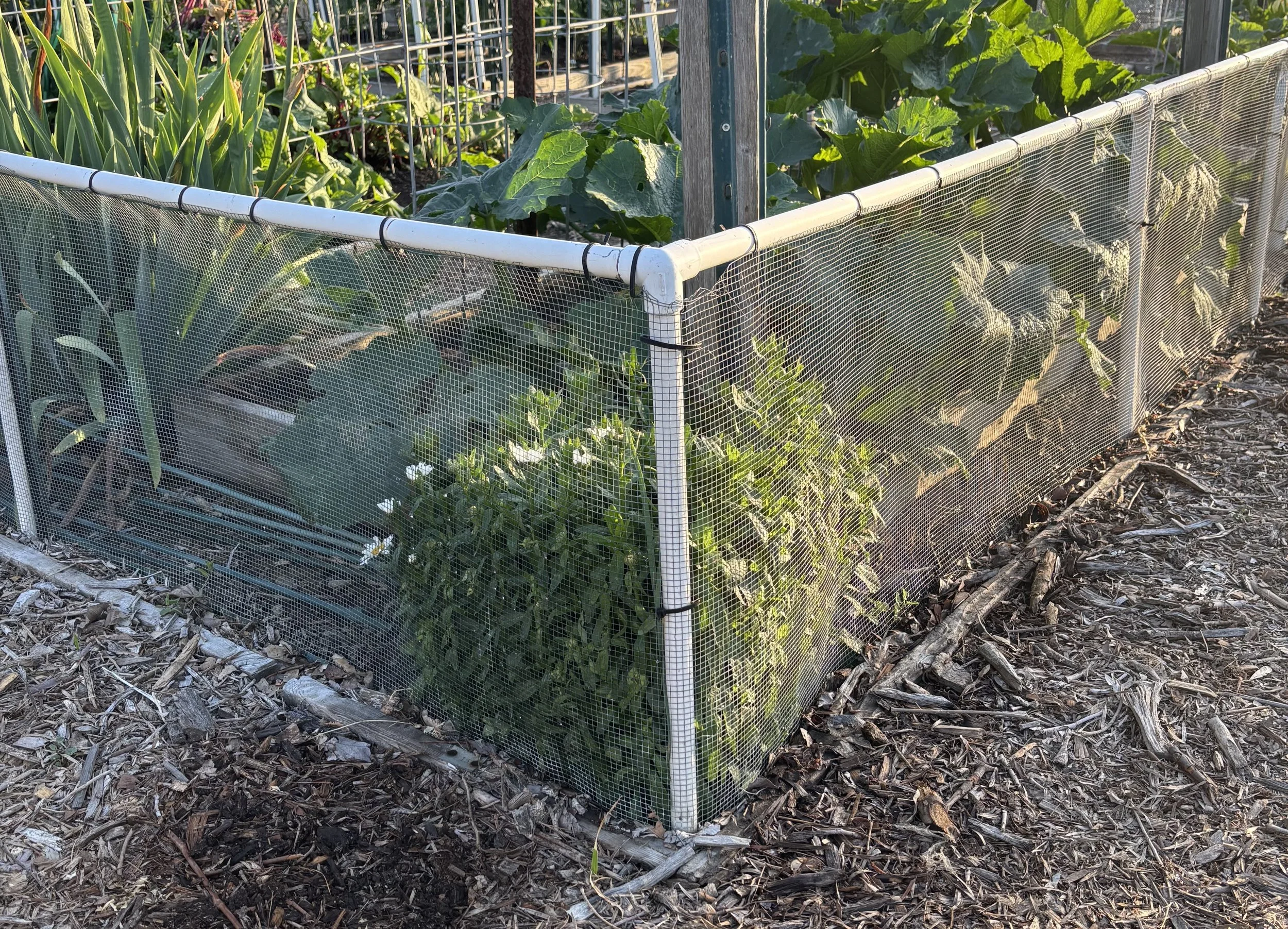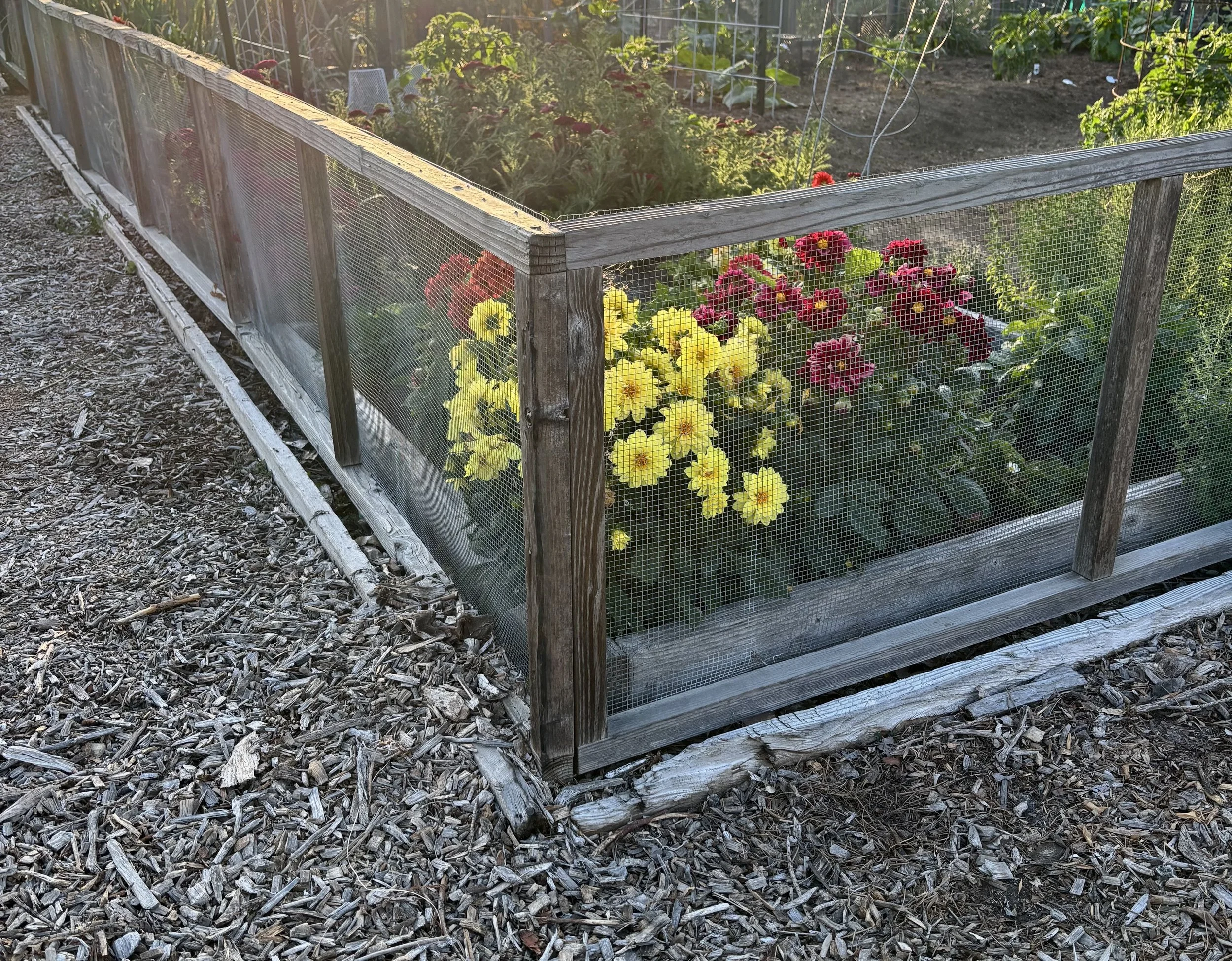Perimeter Fencing Requirements and Recommendations
To add or replace fencing, plans for new and existing plots, including materials and design, must be submitted to fencing@lbcg.org, for approval in advance of installation. Approval will be provided within 5-7 days or earlier, if possible.
In addition to the guidelines provided in the LBCGA Rules and Regulations, the following is helpful information regarding fencing of individual plots:
Optimal Fencing
To ensure stability, a series of rectangular sections with horizontal bars, creating a frame is ideal. Preferred materials for fencing framework are PVC tubing or wood 2 X 4s (cannot be treated). Fencing used over the frame can be galvanized chicken wire, wire mesh or a similar material. Due to safety issues, plastic fencing can only be used with this framed fencing structure.
The fence should have an upper horizontal rail that will define the overall height of the fence (at approximately 2 feet) and a matching lower rail resting on grade that will support the upper rail by vertical supports. The fence cannot be attached directly to the border boards. To prevent excessive sag in the upper rail, the vertical supports should be installed with spacing not to exceed 4-5 feet. The fence should be secured in a vertical and rigid manner by using supports, such as fence pots, rebar, etc.) driven into the ground at sufficient depth to provide rigid members for secure the fencing and to prevent leaning into common walkways. Sections can be installed semi-permanently or in a manner that allows section removal for ease of garden access (bungee cords). Cost to build a stable fence will vary depending on materials used: basic wood fence with gate is estimated to cost a minimum of $700; PVC will start at around $400.
Walk around the gardens and look at existing fences but a few optimal examples are:


